Reader Matt Chroust was right in his guest-post I called Insteon HomeKit – Not Quite Ready For Prime Time – I was just wrong on giving it that title. The Insteon Hub Pro HomeKit-Enabled 2243-222 is such a big fat flaming pile of shit I’d rather punch myself in the face than try to continue using it. I’m out 170 bucks on this thing, and mercifully it’s gone from Amazon, although I suppose if you’re a masochist you could buy one on smarthome.com.
I got a little further than Matt did in his setup, but the process is brutal, the Insteon+ app barely works, and the interface sucks. Read on for a short list of why I gave up on this piece of junk, or just save yourself the trouble and pick up a much better third-party Insteon Hub – the ISY-994i – and the MobiLinc app to interface with it.
Oh Insteon Hub Pro, how do I hate thee? Let me count the ways:
No attention to detail in the documentation
I get it that Insteon is being “eco-friendly” in reducing their packaging and documentation, but even their one-sheet “quick-start guide” shows pretty poor attention to detail, like randomly jumbling steps together that you’re supposed to follow in an up-down order. Sure, not a big thing or hard to follow along, but it’s just a sign of how bad things are to come.
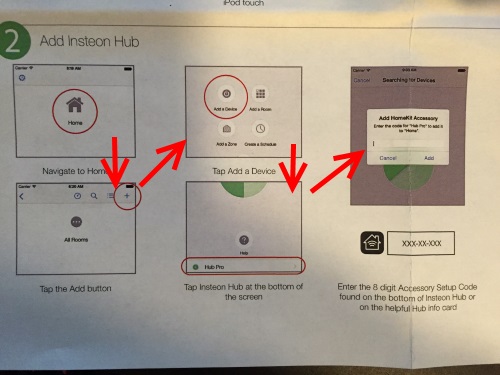
“Searching” for devices? Nope.
After adding the hub (strangely, using the “Add Devices” menu instead of a dedicated “Add Hub” option), you try to add devices and get this pretty little screen saying “Searching for Devices”. But it’s not searching, the whole screen is a fake and the app isn’t really doing anything. As you see in the above documentation, you have to add each device individually by entering its address manually, and putting a device in set mode won’t actually allow it to be discovered (did I mention the ISY is so much better? It provides a “linking” mode that allows you to simply hold down the button on a device to add it.). Instead you have to tap the “Add Insteon” button. Why would you not call this “add device”? Who knows; I guess technically it’s an “insteon device”.
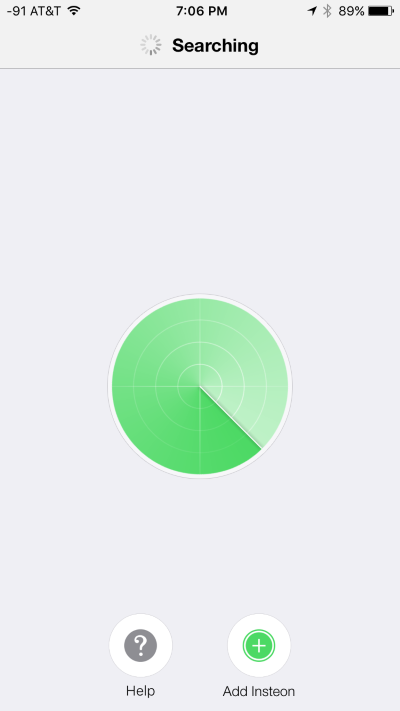
BTW, after doing some more research (through the “Help” link on that screen), it looks like you CAN add insteon devices to the hub using the set buttons. Good luck with that in multi-floor homes, though – the steps are basically 1) hold set button on hub, 2) run downstairs and hold set button on device, 3) wait for link, 4) hold button on device, 5) run upstairs and hold button on hub, 6) start app and go through convoluted process to rename the generic device that just got added.
Adding a device manually by address and trying to rename it? Fuggetaboutit!
So I figured I’d try it out and add a device or two manually by address. I went to rename it after adding, and get this pretty little “Missing” message. The worst part? I’m now boned. You can’t go back, you can’t click “Done”, there is no “Cancel”, you can’t swipe left… No shit, you have to double-click the home button and KILL THE APPLICATION to start over. And THEN your changes are of course lost. The good news is that after you punch yourself in the face a few times, you can go BACK into the device and give it a decent name instead of the generic default.

Error messages are deliciously useless!
Maybe I fat-fingered the address? I don’t know; the second time I tried to add the device it worked. So either I fat-fingered it or it just happened to not respond. Fortunately for the masochist in me, the stupid app won’t tell me what I actually entered to confirm either way – I’m SURE I didn’t enter %@. Click OK and instead of seeing the value you just entered so you can correct or confirm it, you just get the blank screen to start all over.
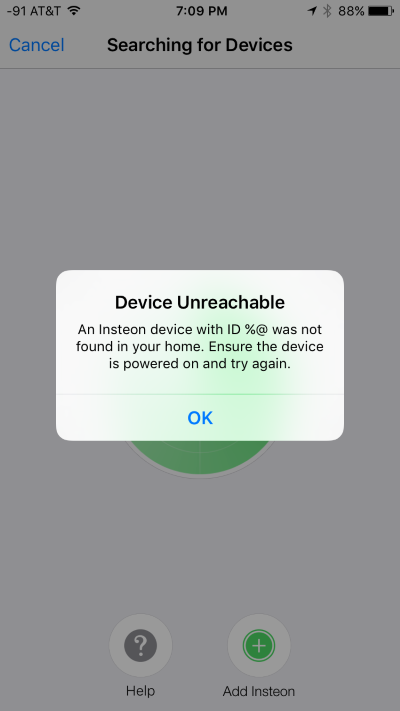
Is it a fan or a light?
Hey! I think I figured out the “Missing” message! I think it’s because you can’t name the Siri control with the same name as the device. Or maybe not, at this point I’m just exhausted and refuse to keep fighting this worthless steaming pile of crap. I get the same “Missing” message for this fan controller, but even weirder, there’s no label under “Siri Control” on this screen for the FanLinc telling me which is the fan and which is the light. So this stupid app actually gives you default values that are the same, and therefore are broken – forcing you to kill the app to move on, guessing which entry is the fan and which is the light when you go back to rename it – brilliant!
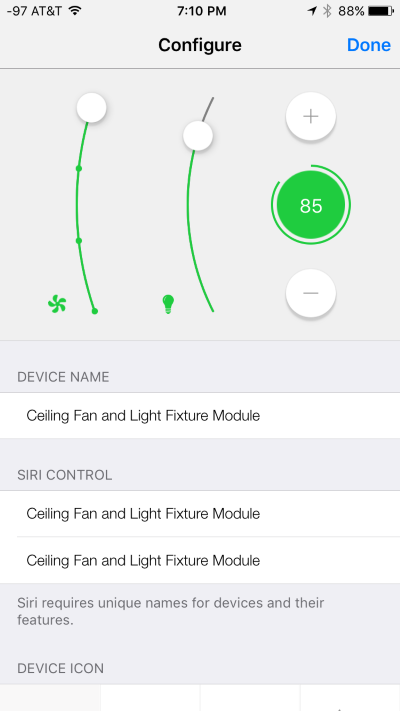
Siri works! Haha, just kidding. Insteon managed to make her dumber.
So after killing the app a few times and figuring out that i needed to use unique names for devices and Siri labels, I could actually say things like “Turn off the Office Light”, and it would work! Sweeeeeet!
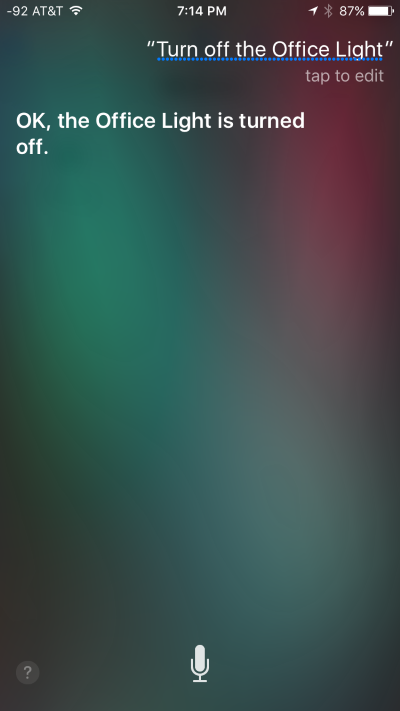
Oh, no wait, that didn’t work this time? Why? Well, being a software developer and masochist I kept trying to figure out why the light wouldn’t turn off when I asked Siri the second time. Turns out as best as I can tell, the app looks at what it thinks the current state of the device is, and does nothing if it’s already there. Specifically, I have a motion sensor in my office to control the lights. When I tell Siri to “turn off the office lights”, the app turns them off and sets the state in the app as “off”. Then I move in the office and the lights turn back on based on the motion sensor scene. I ask Siri to turn off the lights again, but since the app already thinks the lights are off, Siri says “the Office Light is turned off”, but nothing happens since it thinks the light is already off.
I tested this manually with the switch as well. When you’re in the app, if you manually control a switch, the state of that switch in the app doesn’t change. Which is also, of course, a problem. Try this same thing in MobiLinc with the ISY-994i and you’ll see the state of the device change as you physically hit buttons – the way it should be where the app and the devices are in synch.
Bottom line: steaming pile of shit. Save yourself the cash on it and get an ISY994i and PowerLinc Modem
, couple it with MobiLinc, and avoid having to repeatedly punch yourself in the face!


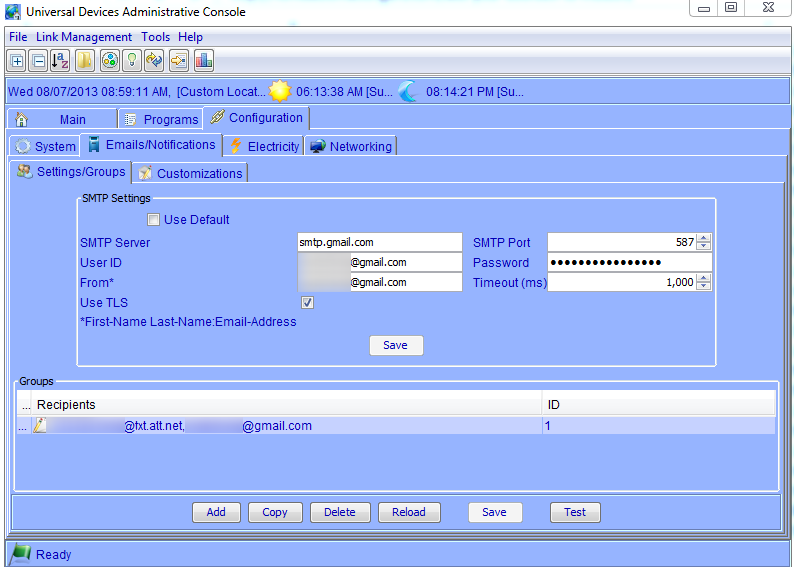
I had the same experience right after it came out and returned it. they gave me my money back. Universal devices is the only way to go. I wish they would put a web gui on it and relieve the java restrictions, but it works well.
frank
Yeah, the ISY web UI isn’t great; you generally have to go into the Java UI to do anything serious. I use my Intellihome installation to track status and logs, which is fully web-based, but it’s still barely on par with the ISY’s native web UI. Over time I hope to expand that to get a more solid, full featured HTML5 UI for the ISY – the API is great and you can do pretty much anything through it that the java applet can do.
Hi Matt,
I’ve had a much better experience with the non-Homekit Hub paired with Amazon Echo. It’s not perfect, but the voice recognition is about 80 percent, and better with proximity.
I can send another guest post your way this month if you’d like.
You may be able to return your Hub Pro (less shipping) if you get an RMA within their returns window. I don’t recall if that’s 30 or 90 days.
Matt – stay tuned for the next blog coming in a few days – the ISY now includes native Echo support if you’re a subscriber to the ISY portal. Spoiler alert: it’s awesome :).
Using the non-pro Insteon Hub 2245-222 with Alexa is still my preferred method to voice control all my Insteon devices. All my ISY programs, switches, on/off modules, and other devices still work fine from both the ISY and the 2245-222 hub. I’ve read about the ISY skill for Alexa and the full home control integration but it still doesn’t sound like it will work as well for me. I want to be able to dim my lighting scenes and all my programs are designed to run autonomously. Also, don’t need to spend another $25/year. I try to avoid user fees since they do add up. I COULD use ISY integration to create programs to invoke through Alexa, e.g. “Alexa turn on xyz program to unlock doors” but I don’t want to do that yet. The one issue I have with the 222 is that, on setting up a new device that’s already installed on the ISY, it usually requires multiple taps on the 222 app after initial setup to get the switch, etc. to work. After that it’s fine.
I couldn’t agree more. I’ve used X-10 since the early 90s and Insteon since 2006. X-10 didn’t always communicate perfectly, but the products never failed and they were always compatible. Insteon is just a joke. I’ve replaced every Insteon device I ever bought at least once, and some are on their 3rd or 4th replacement. And each new Insteon controller has less support for legacy devices and less functionality than the previous one. Here’s Smarthome’s “upgrade path” to each new Insteon hub:
1. Manually delete each and every device in your network. Not a possibility via software if your hub fails (and it will), so go and do a factory reset to each and every one of your devices. Since more often than not that won’t work the first time, and you’ll have no real way of knowing if it did anyway, plan on blocking off a few days for this if you have more than a few devices.
2. Write down all the devices and their IDs. Write down each and every scene you’ve created. Write down any timers you have set. Because there’s no way to print out your configuration.
3. Delete your Insteon account.
4. Buy a new hub and manually reenter every device, every scene, every timer event and start all over again. And be prepared to do this again in another year or two.
5. Resolve to never buy into this retarded company and their 3rd grade science project technology again.
I hate this company and their awful products with every fiber of my being. I feel completely ripped off to the tune of thousands of $ and hope they’re out of business before they do any more harm to trusting consumers.
Wow, them’s fightin’ words! I personally still am a fan of Insteon, and haven’t had that many failures – but yes, I have had to go through these excruciating steps once when my PLM died. It was brutal, but for me still worth the effort and I used the opportunity to rework some scenes that weren’t really working out for me.